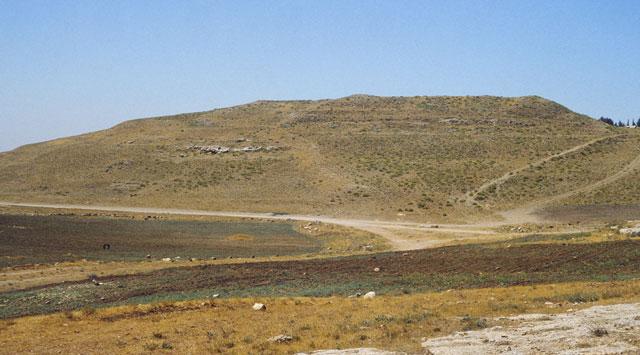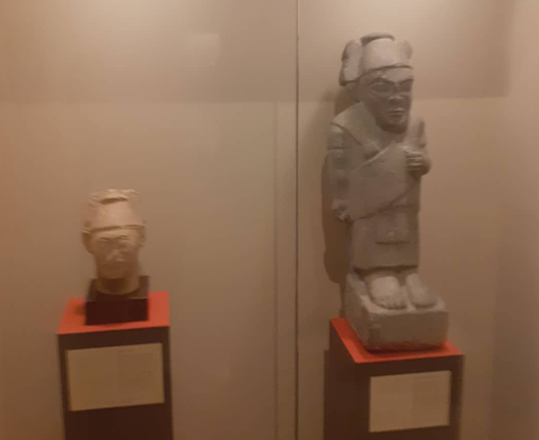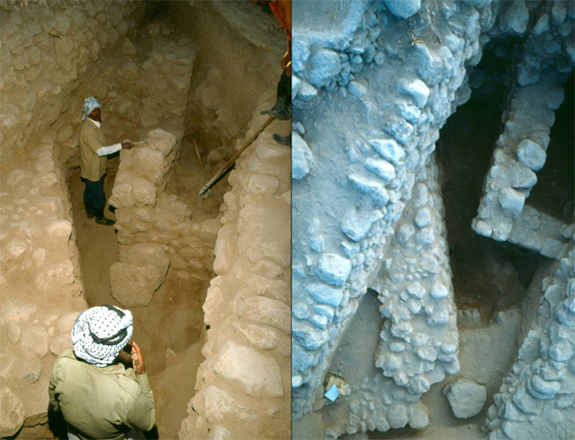You are here
Excavations at Tell Al Umayri give clues to ancient administrative centre
By Saeb Rawashdeh - Jan 16,2018 - Last updated at Jan 16,2018

The north slope before the excavation of Tell Al Umayri (Photo courtoesy of Larry G.Herr)
AMMAN — A group of researchers who explored the site of Tell Al Umayri, 12 kilometres south of Amman, has found a small table or “platform” that might have been used for offering or feasting activities.
“Unfortunately, we have no good evidence as to what sorts of rituals were conducted at the dolmen,” noted Professor of Religious Studies Larry G. Herr.
The small table seems to be of “modern pilgrimage to the tomb of venerated saint or ancestor [wali]”, the scholar, who teaches at Burman University in Canada, explained.
“There also may be some evidence for a shack built to protect people from the weather,” Herr speculated, adding that they also believe there could have been well-worn surfaces surrounding the dolmen indicating circumambulation, similarly to what Muslims perform in Mecca.
The site was unfortified during the Iron II period (from about 800-500 BC), when it was an Ammonite village in the 8th century (Iron IIB), but grew into a royal administrative town probably in the late 7th and 6th centuries BC (Iron IIC), Herr highlighted.
The site also boasted an administrative complex in which the team found many seals and seal impressions, one of which belonged to one of the ministers of the royal government, named Ba`alyasha`, the scholar underlined.
Many figurines and imported objects from around the eastern Mediterranean have also been found at the site. According to Herr, the administrative centre seems to have overseen scores of small farmsteads built exactly during this time in the region surrounding Umayri.
“Most of the farmsteads had multiple wine presses around them and some had groups of objects almost identical to those we found at Umayri at the same time,” he continued.
The team has excavated several of these farmsteads, while others have been destroyed by the growth of Amman.
“This administrative centre seems to have continued into the early Persian Empire. We have found five seal impressions in Aramaic script that seem to have been made by provincial stamp seals mentioning the name of the governor of the province, as well as the name of the province, ‘Ammon’,” the expert said.
According to Herr, scholars assume that the ancients continued the Northwest Semitic spelling of “Ammon” and that the spelling was changed to “Amman” only with the spread of the Arabic language following the Muslim conquest.
Regarding the biblical reference to Umayri during Iron II period, Herr said: “We may have one for the Iron I period, perhaps mentioned in an Egyptian military text, however, there are many biblical references to Ammon and the Ammonites, usually by prophets who denounced them for political or religious reasons.”
Related Articles
AMMAN — The Amman Citadel and its surrounding area was a focal point of Rabbath-Ammon, the ancient capital of the Ammonite Kingdom.
AMMAN — Tell Umayri is an archaeological site located approximately 12 kilometres south of Amman.
AMMAN — According to the researcher Larry Herr, the Iron Age II A represented the 10th century BC, the Iron Age II B period lasted between t


















